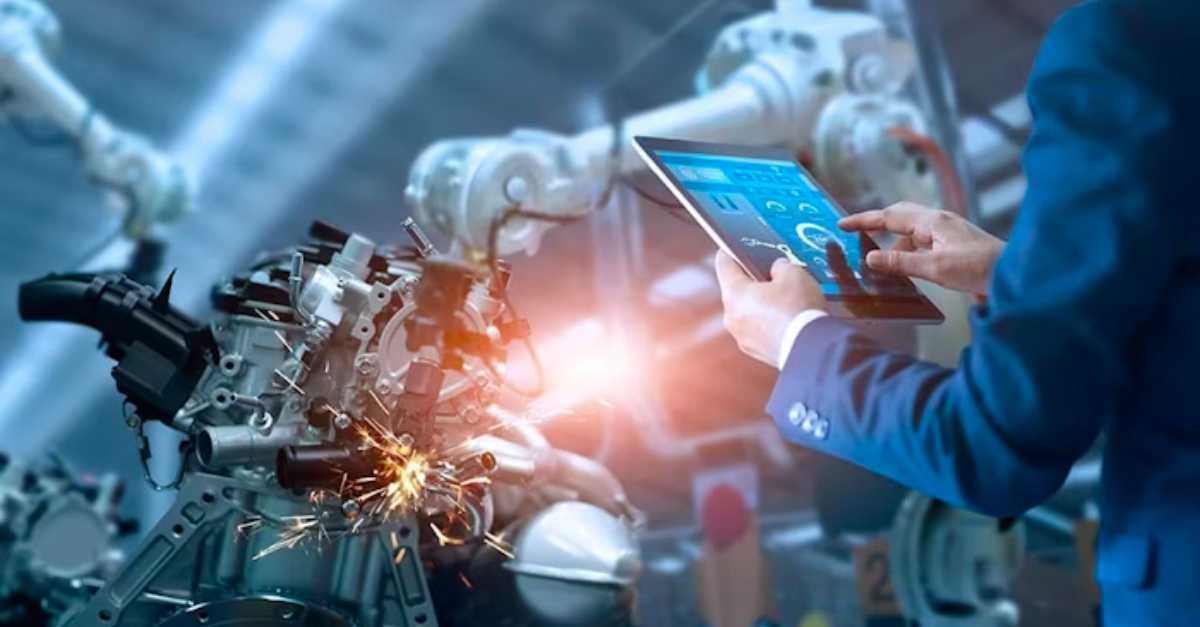
Why Your Business Needs an Effective Mobile CMMS
Mobile CMMS functionality is crucial for remote, multi-site and digitally transformed operations. If you're not mobile, here's why you're missing out.
Solutions
Workplace Management Solutions
Real Estate Management Solutions
Maintenance Management Solutions
Energy Management Solutions
Engineering Document Management Solutions
Asset Management Solutions
Automate campus scheduling for classes, meetings, and exams with our EMS software.
Plan and manage conferences effortlessly with EMS software to impress guests and streamline operations.
Boost workplace flexibility and maximize space use with seamless desk and room booking.
Organize workplace or campus events smoothly, creating memorable experiences.
Optimize workspace, manage allocations efficiently, and reduce costs with our space management solutions.
Deliver projects on time and within budget by improving communication, collaboration, and efficiency with our software.
Streamline lease accounting for ASC 842, IFRS, and GASB compliance.
Manage leases efficiently by tracking key dates, analyzing costs, and ensuring compliance.
Centralize data and analytics for better insights, faster negotiations, and revenue growth.
Centralize facility and asset maintenance, automate work orders, and ensure compliance with our CMMS software.
Extend asset life, reduce downtime, and prevent costly repairs with data-driven monitoring.
Prevent equipment failures and extend asset life by detecting and addressing issues early.
Make sustainable, cost-efficient energy decisions by monitoring and optimizing power consumption.
Remotely monitor and control equipment with real-time data to predict issues, boost efficiency, and reduce downtime.
Easily share and collaborate on documents, creating a single source of truth for engineers and contractors.
Manage and analyze assets across their lifecycle to schedule maintenance, reduce downtime, and extend lifespan.
Improve visibility, automate work orders, and ensure compliance for efficient facility and asset management.
Resources
Browse our full library of resources all in one place, including webinars, whitepapers, podcast episodes, and more.
Support
Looking for access to technical support, best practices, helpful videos, or training tools? You’ve come to the right place.
About Accruent
Get the latest information on Accruent, our solutions, events, and the company at large.

Identify the role that IoT plays in your organization and how to successfully implement it to meet your needs.
The Fourth Industrial Revolution (4IR) of artificial intelligence (AI), advanced robotics, machine learning and the Internet of Things (IoT) is in full swing, and it has begun to revolutionize lives and shape the future of work. AI-powered personal assistants, advanced contact tracing, the ecosystem of Apple products – these are all examples of how IoT has been successfully integrated into our day-to-day.
Its prevalence can also be seen in the world of facilities maintenance and in assets like medical devices, industrial robots and HVAC controllers. This is especially crucial as an increasingly remote COVID-19 workforce has called for a more flexible, interconnected and multi-site technological infrastructure. In fact, according to McKinsey, IoT has arisen as, “one of a handful of new technologies that the World Economic Forum and McKinsey consider pivotal to the future of manufacturing — and a vital improvement lever to help operations emerge from the [COVID-19] crisis.”
That said, just because it is important does not make it easy to understand or successfully implement – and many organizations understandably struggle to apply digital transformation concepts to their assets and facilities.
Here are the latest developments when it comes to IoT in the world of asset management and tips to getting it right.
The Internet of Things (IoT), at its most basic, refers to a large-scale network of computers, technologies and IoT sensors that connect and digitally share information. And the world of IoT is constantly growing, with an increasing number of endpoints tying the physical and digital world more closely together, improving the accuracy of forecasting and allowing for increasingly accurate data-driven automations.
In the manufacturing content, this is huge. If important physical assets, software and IoT platforms can effectively interconnect and communicate with one another (and, of course, with your team), the resulting ecosystem can allow for effective remote asset monitoring, ensure that engineers and maintenance personnel work effectively – and ultimately increase ROI and business efherffectiveness.
The mountains of data from these connected devices and IoT sensors can provide the analytics professionals, technicians and managers in your organization with the actionable insights they need to help improve asset management tracking, increase digital security and improve productivity through thoughtful deployment of AI, automation and enhanced predictive maintenance capabilities. Measurable benefits include:
The impact of these capabilities and benefits cannot be understated, as they can ultimately spell the end of ongoing security concerns, reactive maintenance practices, ineffective asset tracking and other high-cost, low-efficiency manufacturing problems.
That is why top organizations in asset intensive industries around the world are leading the charge with IoT solutions. McKinsey & Company, for starters, has identified 44 organizations in the “Global Lighthouse Network.” These 4IR companies are, “leading the way through their adoption of critical 4IR technologies, including digitization, automation, advanced and predictive analytics, virtual and augmented reality, and the Industrial Internet of Things (IoT).”
There is also particularly high adoption of IoT in the healthcare industry. 79% of healthcare providers with revenue of over $100 million employ IoT, and Gartner predicts that this IoT spending will continue to increase by 13% in the next fiscal year. What is more, 75% of these providers believe that they will see financial payback within three years.
In short, these organizations are pushing the envelope of technological advancement to reshape both their operations and the customer journey because they understand that the efforts can be well worth it in the long-term.
Across asset-heavy industries and verticals, roadblocks to successful IoT implementation often include:
IoT devices and physical assets connect to the Internet. In many industries, organizations do not fully account for the threat this can pose – and individual assets are left without the proper security patches and updates. This can ultimately lead to asset breaches and broader systemic security threats that can immediately undermine the success of any IoT infrastructure.
IoT operations have mountains of data coming in. Without the right analytics tools and strategies, it will be impossible to do anything with that information. That is why it is important to get that infrastructure right and:
Unfortunately, many organizations embark on IoT endeavors without taking these steps, and it leads to improper implementation, low adoption and poor results.
There is a massive knowledge gap in the manufacturing environment – and that gap is only widening over time. The majority of the nuanced skill lies in the older generations, Baby Boomers that are about to retire and take their knowledge with them. And the younger generations just are not interested in filling their shoes – which is why positions related to digital talent, skilled production and operational management are becoming increasingly difficult to fill as the need for them arises in an IoT world.
It can be difficult to obtain the budget and funding to support IoT investments, particularly in the extra lean COVID era we live in today. There is generally an array of high up-front costs associated with IoT tools:
This can cause a lot of friction with stakeholders and decision-makers who simply want to make money and see a quick ROI without too much complication. Those presenting IoT tools have to keep this in mind and prepare accordingly.
The good news? It is possible to overcome these obstacles and empower your facility and asset management operations with IoT. To accomplish this, you should:
It is not about the IoT technology and automations themselves, but rather about their business value and what those tools can improve for your business operations throughout the asset lifecycle. It is important to maintain this perspective as you move forward with IoT efforts and to stick with technology and changes that can actually make a defined, measurable impact. Here, you should always answer questions like:
Otherwise, you can get lost spending time and money following a pipe dream that is simply not applicable to your infrastructure or your business model.
If you undergo this kind of comprehensive transformation to your asset management and maintenance, it will essentially be a whole new world for your workforce – and you will have to keep that in mind and implement the right training, perspective changes and cultural shifts in your business to get your team ready. Some ways you can help them prepare:
The number one tip to getting IoT implementation right? Working comprehensively.
McKinsey & Company clarifies that Lighthouse corporations, “work across four dimensions at once: their business processes, management systems, people systems, and their IoT and data systems.”
Specific changes, according to McKinsey, can include:
Remember that this kind of top-to-bottom, comprehensive cultural change is necessary for effective digital transformation, as it will allow businesses to scale and work as a unit. Do not cut corners.
If you take an agile, continuous approach to incorporating IoT assets and platforms— meaning that your processes and solutions will continuously evolve through collaboration – it will help you consistently grow, improve costs, optimize critical assets and streamline your company’s responsiveness without your efforts becoming outdated or “trapped in time.”
Agile methodologies will also allow your organization to use real-time data, rather than gut instinct, to diagnose issues and make decisions.
Consider working with your partners and stakeholders throughout this process rather than safeguarding your data and working in a vacuum. Though it may seem counterintuitive, this kind of communication and data exchange with your partners, suppliers and customers can encourage best-practice exchange while providing the kind of technological ecosystem and shared data science that can improve your operations, optimize your processes and lower your costs.
Gone are the days when a piece of technology can exist discretely and disconnected from other tools. Your technological infrastructure must break down silos, integrate and work comprehensively to allow for innovation, analytical insight, and root-cause problem-solving across your organization.
The Lighthouse organizations that get this right, according to McKinsey, experience 36% lower inventory costs and time-to-market increased by 90%.
For this kind of effort to work, all relevant personnel must be roped in and on board at all times, including data engineers, those involved in your major systems like your CMMS or ERP, IoT architects, data scientists, product managers and employees directly involved in maintenance activities.
This is the only way to streamline adoption, and getting this right has to involve communication and training to close the talent gap and ensure that relevant personnel have the information and skills they need to work in a 4IR facility.
Last but not least, you absolutely must maximize your connectivity to allow for more efficient decision-making and less communicative and operational redundancy. When it comes to your assets, this can exist in the form of something like RFID tags to increase transparency and accessibility of relevant information.
Across your facilities, fully connected systems will improve your supply chain, increase efficiency, reduce communication time, and more.
IoT does have a place in asset management and maintenance – and incorporating smarter, more interconnected technologies is certainly something that forward-thinking organizations should consider.
When implementing IoT in your manufacturing business, though, remember that it is not about the technology itself, but about the best practices, priorities, impacts and solutions that technology can deliver to your business. By keeping this in mind and implementing IoT with prejudice, your organization can maximize agile methodologies, increase transparency, and use real-time data to inform decision-making and ultimately maximize your technological ROI.
Download our Benchmarks & Best Practices for Maintenance Management eBook now to learn more about enhancing your asset management programs.
Mobile CMMS functionality is crucial for remote, multi-site and digitally transformed operations. If you're not mobile, here's why you're missing out.
Understand the complexities of artificial intelligence and the keys to effectively integrating it into your organization.
Discover why good data structure, governance, and strategy are core to effective digital transformation and how to better organize data with the ...
Subscribe to stay up to date with our latest news, resources and best practices